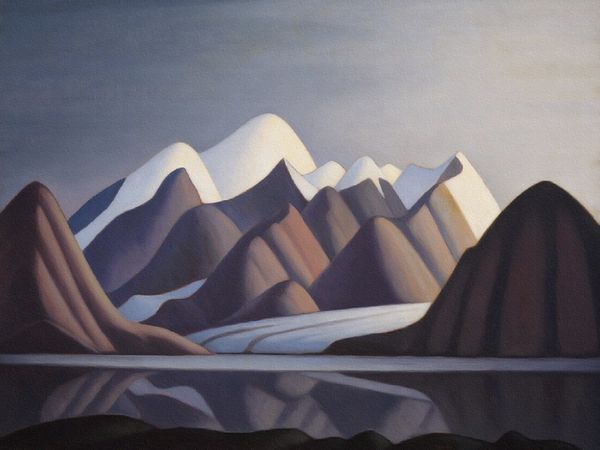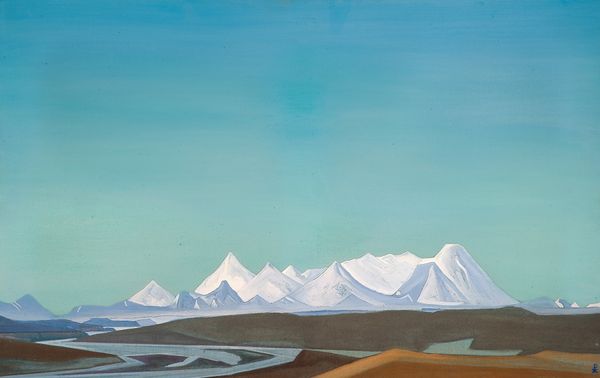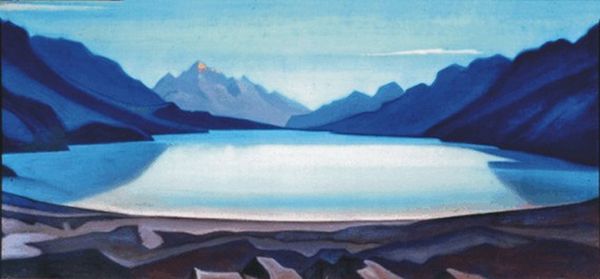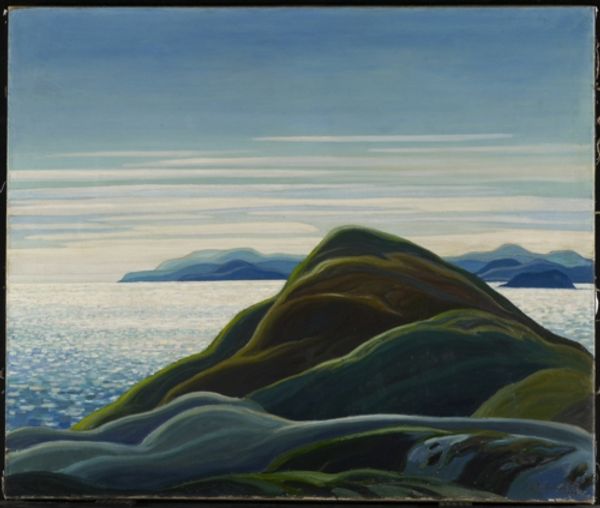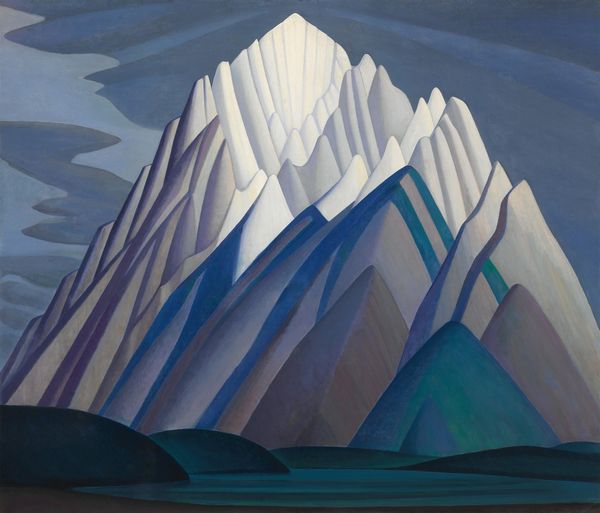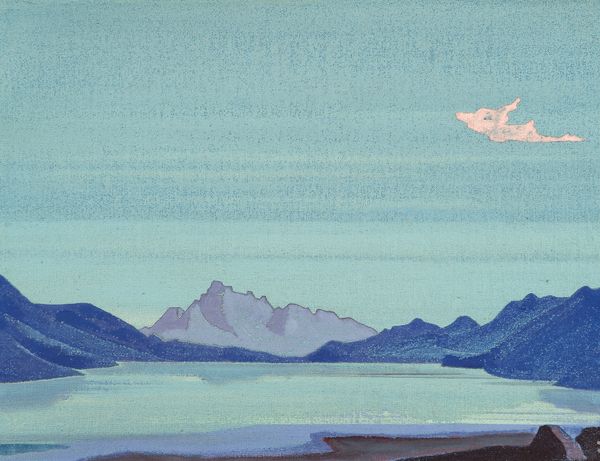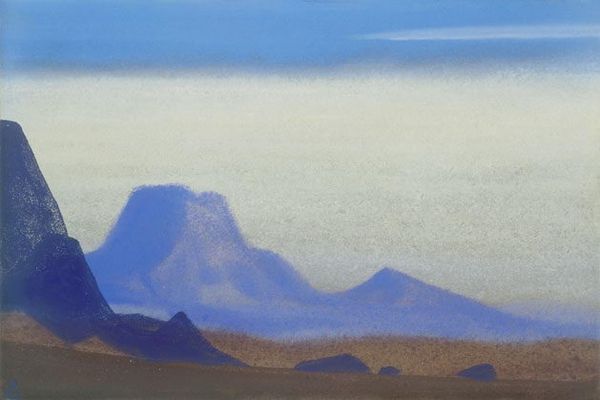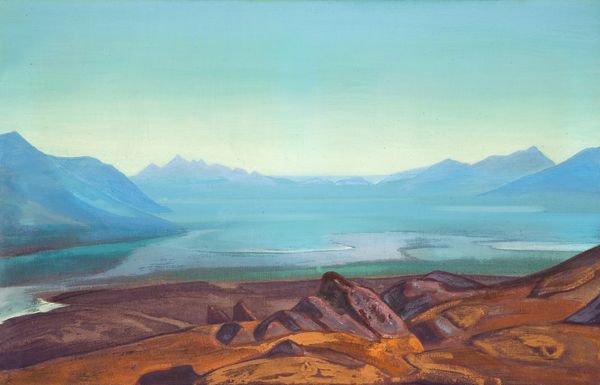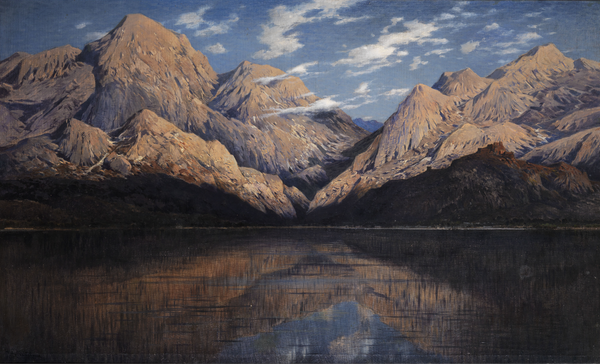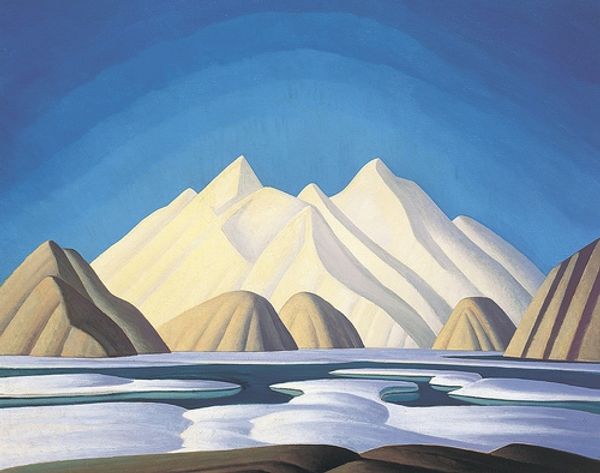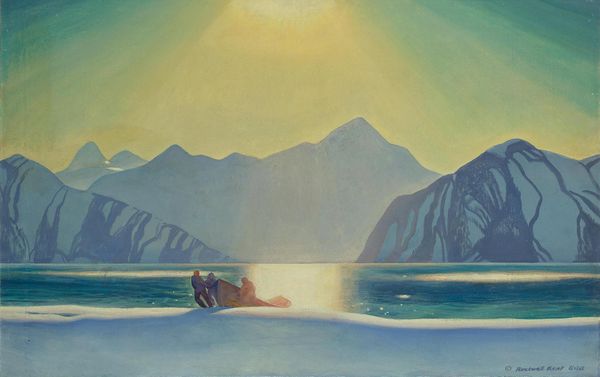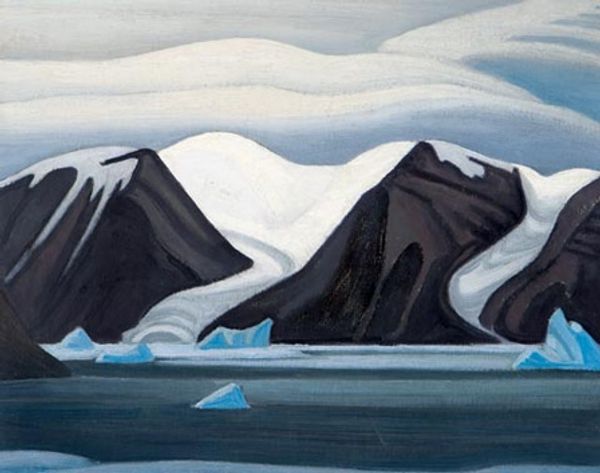
Copyright: Rockwell Kent,Fair Use
Curator: Here we have Rockwell Kent’s “Mirrored Mountain, South Greenland,” painted in 1929. Kent, a fascinating figure, worked with oil paint to create this seemingly still landscape now residing at the Hermitage Museum. Editor: There's something almost melancholic about this piece, isn’t there? The subdued color palette, predominantly blues and grays, and the sharp, jagged mountain peaks—it evokes a sense of isolation, maybe even a touch of foreboding. Curator: I think the feeling you are reacting to may derive from his application. Look at the almost flattened space; it pushes forward in a way that isolates. His choice of oil paint and the way he builds up layers, then smoothes the surfaces contributes to that stillness. It’s all about control, even within a scene that suggests wilderness. Editor: Exactly! And if we consider Kent's own socio-political leanings at the time, that control becomes quite potent. Kent, aligned with socialist ideologies, championed workers’ rights. Seeing that meticulous layering and constructed stillness – against the romantic idea of raw nature – the image becomes loaded with class critique, a comment on constructed versus 'real' landscape perhaps. Curator: An intriguing reading. But also consider this piece came out just before the Great Depression. The austere nature of this painting reflects some sense of struggle during the Interwar period as capitalism reconfigured itself. Editor: True, we can’t separate art from its epoch, nor from his complex position. But I think it opens up conversations about land, ownership, and the relationship between man and environment. Also Kent was well known for the book illustrations of the working class he produced! So maybe we should think more deeply about labor, and who might experience or own or use this landscape in this way. Curator: It’s interesting to think about how labor seeps in, even into this apparently pristine vista. It's as though we can read layers of intent in this rendering of Greenland. Editor: Precisely. By reflecting on how such materials – oil, canvas, even place – can bear sociopolitical context we engage in a more equitable art appreciation that sees beyond romantic visions of genius and nature.
Comments
No comments
Be the first to comment and join the conversation on the ultimate creative platform.
